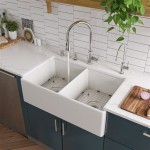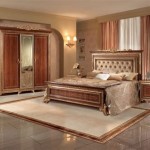Essential Aspects of Farmhouse Coffee Table Plans
Farmhouse coffee tables are a beautiful and functional addition to any home. They are typically made of solid wood and have a rustic, farmhouse-chic style. If you're looking to build your own farmhouse coffee table, there are a few essential aspects to keep in mind.
1. Size and Shape
The first thing you need to consider is the size and shape of the coffee table. The size will depend on the size of your room and the amount of seating you have. The shape can be anything from a simple rectangle to a more elaborate oval or round. If you have a small room, a smaller coffee table will be a better choice. If you have a large room, you can go with a larger coffee table.
2. Materials
Farmhouse coffee tables are typically made of solid wood. Some of the most popular wood types include pine, oak, and maple. You can also use reclaimed wood or MDF (medium-density fiberboard) if you're on a budget. If you're using solid wood, be sure to choose a type of wood that is durable and resistant to wear and tear.
3. Style
The style of your coffee table should match the rest of your home's décor. If you have a farmhouse-chic style, you'll want to choose a coffee table with a rustic, distressed finish. If you have a more modern style, you can choose a coffee table with a cleaner, more contemporary look.
4. Function
In addition to being a beautiful addition to your home, your coffee table should also be functional. Make sure the coffee table is the right height for your seating and that it has enough surface area for drinks, snacks, and other items. If you have a small space, you may want to choose a coffee table with drawers or shelves for extra storage.
5. Construction
When it comes to construction, there are a few different methods you can use to build a farmhouse coffee table. One popular method is to use pocket holes. Pocket holes are drilled at an angle into the wood, which allows you to join the pieces together without having to use nails or screws. Another method is to use mortise and tenon joints. Mortise and tenon joints are created by cutting a mortise (a square hole) into one piece of wood and a tenon (a square peg) into another piece of wood. The tenon is then inserted into the mortise, creating a strong and durable joint.
6. Finishing
Once your coffee table is built, you'll need to finish it. There are a variety of different finishes you can use, including paint, stain, or varnish. If you're using paint, be sure to choose a type of paint that is durable and resistant to wear and tear. If you're using stain, be sure to test the stain on a scrap piece of wood first to make sure you like the color.
7. Assembly
Once your coffee table is finished, you'll need to assemble it. If you used pocket holes to join the pieces together, you'll simply need to insert the screws into the pocket holes. If you used mortise and tenon joints, you'll need to glue the tenons into the mortises and then clamp the pieces together until the glue dries.
Conclusion
Building a farmhouse coffee table is a great way to add a beautiful and functional piece of furniture to your home. By following the tips in this guide, you can create a coffee table that will last for years to come.

Rustic X Coffee Table Ana White

Farmhouse Coffee Table Beginner Under 40 Ana White

How To Build And Distress Farmhouse Style Coffee Table

Diy Farmhouse Coffee Table Love Grows Wild

Diy Modern Farmhouse Coffee Table Plans Fix This Build That

Farmhouse Coffee Table Build Plans Houseful Of Handmade

Farmhouse Coffee Table With Storage Kreg Tool

Build Instructions For A Square Farmhouse Coffee Table Singapore

Diy Farmhouse Coffee Table With Turned Legs Storage Free Plans

30 Easy Diy Farmhouse Coffee Table Projects With Free Plans Joyful Derivatives








